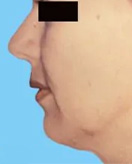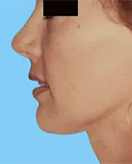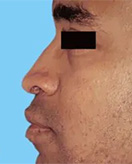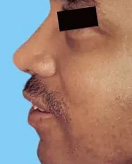A hair transplant is a surgical technique in which hair follicles from a donor area are extracted and transplanted to the scalp’s balding or thinning areas. The outcome of the hair transplant depends on the healing process, despite the treatment being generally safe and effective.
A successful recovery is critical for achieving optimal results from hair transplantation. Patients will recover at distinct paces, but it usually takes a few weeks for the transplanted hair to settle and begin to grow.
To maximize the results of a hair transplant surgery, it’s important to follow expert advice during the recovery process. This can involve taking prescription medicine, refraining from particular behaviors, and leading a healthy lifestyle.
In this article, we will offer professional guidance on how to maximize a successful hair transplant recovery. We will cover subjects such as post-operative care, medication management, and lifestyle adjustments.
Contents
- 1 How Do Hair Transplants Work?
- 2 FUE vs. FUT Hair Transplantation
- 3 Graft Growth
- 4 Is the Hair Transplant Recovery Process Painful?
- 5 Hair Transplant Recovery Timeline
- 6 5 Days After Surgery
- 7 Two Weeks After Surgery
- 8 1 Year Post-Operation
- 9 Follow These Instructions For a Successful Hair Transplant Recovery
- 10 Getting Back To Normal Life After the Procedure
How Do Hair Transplants Work?
As with all medical procedures, hair transplantation takes place at medical offices or hospitals. This one-day outpatient surgery is typically performed using local anesthetics.
Hair follicles from donor locations are transplanted during surgery into balding areas of the patient’s scalp. The transplanted follicles are usually extracted from the back or side. Eventually, the implantable follicle graft will grow natural hair.
FUE vs. FUT Hair Transplantation
FUE and FUT are two different hair transplant procedures, with their own unique advantages and disadvantages.
During the less invasive FUE procedure (Follicular Unit Extraction), individual hair follicles are removed from the donor area, which is often the back of the head, and transplanted to the recipient area, which is the bald or thinning area. This is done using a small punch tool that creates tiny circular incisions around each follicle, which are then extracted using forceps. The benefits of the FUE procedure include less scarring, a shorter recovery time, and a lower risk of complications compared to FUT procedures.
FUT procedure (Follicular Unit Transplantation), on the other hand, involves removing a strip of skin from the donor area and dissecting it under a microscope to create individual follicular units. These units are then transplanted to the recipient area. This procedure can be more efficient for larger transplant sessions, and can often result in a higher yield of transplanted hair compared to FUE hair transplants. However, it does leave a linear scar in the donor area, which can be more noticeable than the small, circular scars left by FUE.
The decision between FUE and FUT procedures will ultimately be based on the patient’s personal preferences and priorities, the degree of hair loss, the amount of donor’s hair that is available, the desired result, and the level of hair loss. It’s important to discuss these factors with a certified hair transplant surgeon in order to decide on the best plan for your unique situation.
Graft Growth
Graft growth is a critical component of a successful hair transplant procedure. The survival and growth of newly transplanted hair, known as hair grafts, is crucial for achieving optimal results.
The first few days after the hair transplantation are crucial for graft survival. The grafts are extremely delicate and vulnerable during this time. Follow the doctor’s instructions on how to care for the transplant area during this time, including avoiding touching or rubbing the scalp and avoiding any strenuous physical activity.
Once the grafts have established themselves, which typically takes around 10 days, they will enter a resting phase. The hair development cycle includes a natural phase during which the transplanted hair may fall out. Patients should not be alarmed by this and should continue to follow post-operative care instructions.
New hair growth should start to appear from the implanted grafts three to four months after the procedure. Although each patient’s new hair will grow at a different rate and thickness, the ultimate hair transplant results are normally visible 9 to 12 months after the treatment.
To maximize graft growth and ensure the best possible results, it’s essential to follow all post-operative care instructions provided by your doctor. Limiting time in the sun, quitting smoking and alcohol, and eating a balanced diet are all necessary to achieve this.
In some cases, patients may experience slower or delayed hair growth due to factors such as underlying medical conditions or poor post-operative care. It’s crucial to talk to your doctor if you have any worries regarding the growth of your transplanted hair. They may recommend additional treatments or follow-up appointments to help optimize the results of your hair transplant.
Is the Hair Transplant Recovery Process Painful?
The recovery process after the procedure can be uncomfortable, but it is typically not very painful. Most patients report some level of discomfort during the first few days after the treatment, such as soreness or tenderness near the transplant site. However, this discomfort can usually be managed with pain medication prescribed by the doctor.
During the healing process, some individuals might experience numbness or tingling. This is a common indication that your body is mending, and it will go away on its own in a few weeks.
Even though the recovery period is typically not too uncomfortable, it’s important to adhere to all post-operative doctor’s instructions to prevent any issues or discomfort.
If you experience intense pain or discomfort or if you have any concerns about the healing process, contact your doctor as soon as possible. They can provide additional guidance and recommendations to help manage your symptoms and ensure a successful recovery.
Hair Transplant Recovery Timeline
What will happen after hair transplantation surgery?
What is the hair transplant recovery time?
The direction is the key factor that makes this method an ideal solution for natural looking.
5 Days After Surgery
You should gently wash your hair unless your doctor advises against it. You’ll get detailed instructions in the aftercare package, including recommendations for products.
The aches and pains eventually subside. Your graft is likely already transferred to the new place and should not be affected. It should be treated gently but avoid scratching or picking up the skin from either the donor location or transplant site as it can fall off completely.
Two Weeks After Surgery
Hair transplants begin falling back within two weeks after the initial surgery. No worries! Many patients feel dread when someone damages grafts. Typically shedding is normal. This process is part of hair development and can take place during the next 6 weeks.
Within 2-4 weeks of transplantation, the follicles can begin to grow once more. When performing the strip technique (FUT) the stitches are removed at 2 weeks post op.
1 Year Post-Operation
After a year, the patient’s results are clearer. New hair can be cut as desired throughout the patient’s lifetime. There are no specific hair care items recommended. Simple shampoo or conditioner will help.
Follow These Instructions For a Successful Hair Transplant Recovery
After the hair transplant surgery, your doctor will provide you with specific instructions for caring for the transplant area.
Some common post-operative care instructions may include:
- Gently cleaning the transplant area with a special shampoo
- Using clean towel
- Avoiding direct sunlight or wearing a hat when going outside
- Refraining from strenuous activities for several weeks
- Sleeping with your head elevated to reduce swelling
Your doctor may prescribe medications to help manage pain and inflammation. It’s crucial to take these drugs as prescribed and to let your doctor know if you have any negative side effects or reactions.
Maintaining a healthy lifestyle can help promote a successful hair transplant recovery. This may consist of:
- Eating a well-balanced diet rich in nutrients that encourage hair development, such as iron, protein, and biotin.
- Avoiding smoking and alcohol consumption, as these habits can impair healing and limit blood flow to the scalp.
- Getting adequate rest to help reduce stress levels.
It may take several months to see the full effects of a hair transplant recovery because it is an ongoing process. It’s important to be patient and have faith in the process throughout this period. Most likely, your doctor will set up follow-up sessions to keep an eye on your development and make sure the transplant is healing appropriately.
Getting Back To Normal Life After the Procedure
It is necessary to give yourself time to rest and heal after a hair transplant before returning to your regular routine. But when the first healing phase is through, most patients can resume their normal activities.
Also, it is important to prepare in advance and make the necessary plans to guarantee a quick recovery. This may include taking time off work or arranging for someone to help with household chores or childcare during the initial recovery period.
Once the initial time of healing is finished, you need to gradually get back to your regular routine. This may include light exercise and slowly returning to work.
Avoiding any activities that could cause excessive sweating or pressure on the transplant area is also important during the initial recovery period.
A successful hair transplant recovery requires careful attention to post-operative care, medication management, and a healthy lifestyle.
By following expert advice and being patient, patients can achieve optimal results in hair growth and enjoy a fuller, healthier head of hair.
If you have any questions related to hair transplant, feel free to call (212) 750-9494. The staff of Park Plaza Plastic Surgery from New York is here to answer all your questions.









